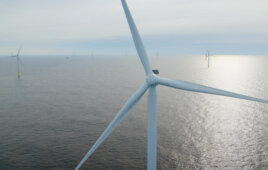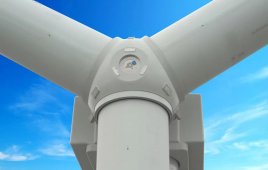Developers of a 900-mile, $2.5 billion high-voltage, direct-current transmission project that would deliver renewable energy from Arizona and New Mexico to Southern California, took a step forward recently by reaching an agreement with the Western Area Power Administration, (WAPA).
Centennial West Clean Line, an affiliate of Clean Line Energy Partners, and WAPA said the agreement will create a relationship to further development of the project. Centennial West will pay all costs related to the project, while WAPA and the U.S. Department of the Interior’s Bureau of Land Management will jointly conduct the environmental review of the proposed project.
Centennial West is one of four transmission projects in the works by Clean Line and the only project designed to deliver renewable energy to the West Coast. The other projects will deliver renewable energy from the central U.S. to load centers in the Midwest and Southeast, with each project in various stages of permitting.
Clean Line President Michael Skelly called the WAPA agreement an important benchmark for the Centennial West project. It lets Clean Line work closely with WAPA as the project gets developed, but with no risk of costs to taxpayers. Skelly said the project still has many hurdles to overcome.

The route of the overhead, high-voltage Centennial West Clean Line has not yet been determined. The project will begin in northeastern New Mexico and will end in southern California.
The evolution of the California energy market will be an “important part of the equation” in the development of Centennial West, Skelly said. Demand for renewable energy will continue to increase in the state beyond the current renewable portfolio standard of 33%.
Skelly predicted that over time, as demand for renewable energy increases, sources of renewable energy, such as solar power from Arizona and wind power from New Mexico, will be attractive to the California markets. “Over time the California market will get bigger and bigger, and they’ll go beyond 33%,” he said. “The governor has talked about 40 and 50%.”
A recent study suggested that high penetration of renewable energy in California will require diversity in both technical forms of renewable generation and geographic location, Skelly said. The Centennial West line could provide technical and geographic diversity to California, he added.
Dave Berry, VP of finance and strategy at Clean Line, explained that at higher penetration levels, solar power becomes less valuable than wind power. “The study is about economics and the value of generation,” he said. “What it says is if you want to achieve very high renewable penetrations, it makes sense to use a mix of solar and wind.”
Due to limited wind resources in the state, Berry said California may eventually need to import wind energy. “As you think about California trying to decarbonize, the 33% RPS shouldn’t be seen as a cap on cost-effective renewable generation,” he said. “Think about where wind costs have gone — much lower. There’s certainly a big market out there. We think there’s room for more than one project to deliver this energy.”
Filed Under: Projects




